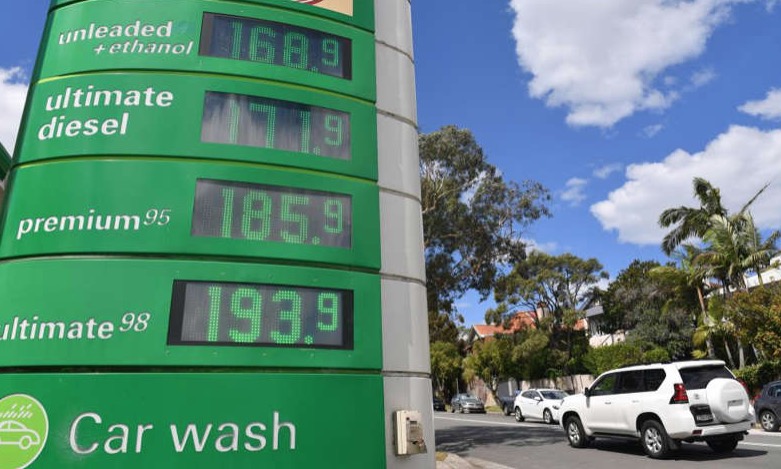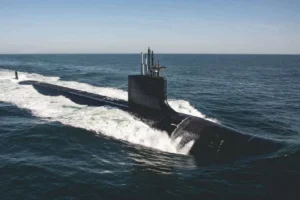Source: The Guardian
Service stations are a new source of public angst, with their red neon signs searing the psyches of drivers worried about how much their next filling will set them back.
Petrol prices are emerging as a political touchstone again too, with $2 a litre in major cities in prospect for some grades.
That’s a real chance as the summer driving season approaches and the desire to put lockdowns in the rear-view mirror adds to the lure of the wide, open dual-carriageway.
Here’s what you might like to know:
What’s happening to prices?
Remember those halcyon days last year when petrol prices averaged 129.7 cents per litre in our five largest cities?
No, we don’t either, because we were either locked down or worried that we might stray into a Covid ambush.
Related: Record levels of renewable energy drive down electricity prices across Australia
But at such prices, you could brag that petrol in real terms (after stripping out inflation) was at its cheapest in 22 years, according to the Australian Competition and Consumer Commission. (Hint: when the Holden Commodore ruled the roads.)
Ah, nostalgia.
Since then, it’s been mostly one-way traffic. As the Australian Bureau of Statistics told us earlier this month, the maximum average daily unleaded petrol price reached a record high of $1.65 a litre during the September quarter, helping to push up the wider consumer inflation index.
What’s driving the rise?
For the ABS, the push for higher prices came from “higher global oil prices amid economic recovery and supply disruptions”.
Let’s take that on face value for now.
Yes, Australia’s petrol prices are pegged to international markets, specifically the Singapore benchmark known affectionately as Mogas 95 to some petrolheads.
Prices have see-sawed a bit, such as during a brief period when oil futures became negative for the first time in April 2020. At the time, holders of the contracts briefly had to pay people to take the fuels off their hands because demand had dived in major economies.
A recovery in demand and some Covid-linked supply snafus have pushed oil prices back to about $US75-80 a barrel of late, depending on your blend of crude.
That’s a bit shy of double the average price in 2020, so you’d expect to see some added cost flow on at the bowser.
Filling up with local costs
On top of the shipping costs to get it here, the government applies an excise fee of 43 cents a litre, indexed twice yearly.
That’s a flat tax that all road users pay (unless you’re a mining company, or an electric vehicle owner – more on the latter later).
The Australian Automobile Association, representing the various state and territory motorist groups, says fuel excise will tip $11b into commonwealth coffers this year and $49.3b over four years.
The cost of transport for an average metropolitan household has now climbed above $400 a week for the first time, the AAA said this week. The $401.86 tally was up as much as $58 a week compared with 2020.
For those in Sydney, for instance, the cost was $477.56 a week, while Wagga Wagga somehow managed to keep their household transport bill to $309.41.
Regional variation
The wonder of Wagga, though, hints at a flaw in the “it’s just the free market (plus taxes) at work” response to what steers petrol prices one way or the other.
The ACCC has launched numerous investigations into petrol prices over the years. It lists a range of influences, including changes in the value of the Australian dollar against the greenback (in which all major commodities are priced).
It also publishes a neat table of petrol price cycles for major cities, updated a couple of times a week.
The results, though, suggest something else is at play or otherwise price trends would move more in lockstep than they do.
An ACCC spokesperson said “like many markets, the degree of competition varies according to location, and some locations have more competitive markets than others”.
“Competition is influenced by a number of factors including the size of the market, the location of the market, the number and type of businesses in a market, and the pricing strategies of the businesses,” the official said. “The degree of competition changes over time.”
Not sure, though, that explains those city-by-city shifts, nor what gives in Wagga.
Going the extra mile
Petrol and other fuels are unusual because the seller is required by law to make the prices public.
That alone triggers unusual behaviour among consumers that doesn’t happen with, say, asparagus, where prices are harder to compare according to Richard Denniss, head of economics at The Australia Institute.
Denniss, himself a former “petrol transfer engineer” (AKA servo employee) in his youth, says it wasn’t uncommon to see a driver drop a U-turn across double lines, braving fines, to save one cent a litre by not filling up at a service station across the road.
“They’d save 40 cents and then pay $10 for bottled water,” he says.
The same price signals drivers see are also obvious to rival petrol stations.
As with airlines that lift seat prices as the flight day nears, so do service stations if a weekend or holiday nears. “Petrol stations do exactly the same, because they can,” Denniss said.
Shopping around can save some money and various apps can help, he adds.
Still, over time the shift to electric vehicles should leave consumers less at the mercy of the market.
For instance, driving 100 kilometres at 10 litres of petrol costs this author about $16 in fuel alone, while his EV can do that in about $3 at current current prices. (Servos are handy for pumping up tyres but that’s about it.)
And for those recharging from their own solar panels, the fuel is effectively free.












